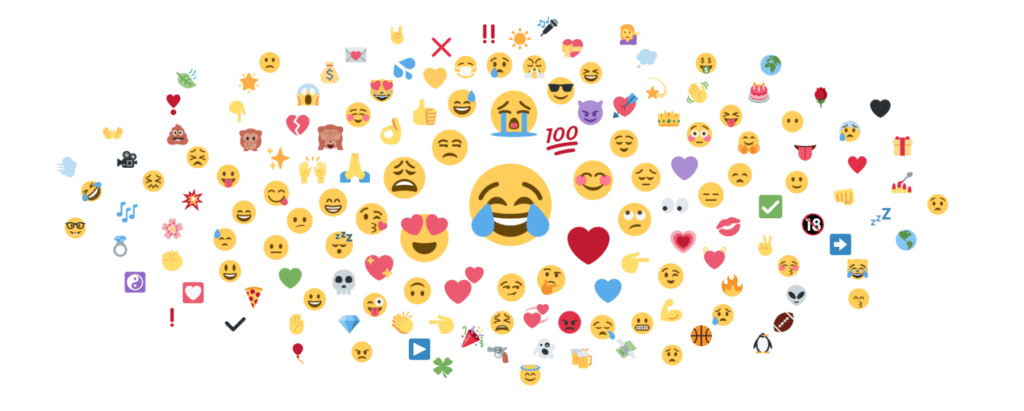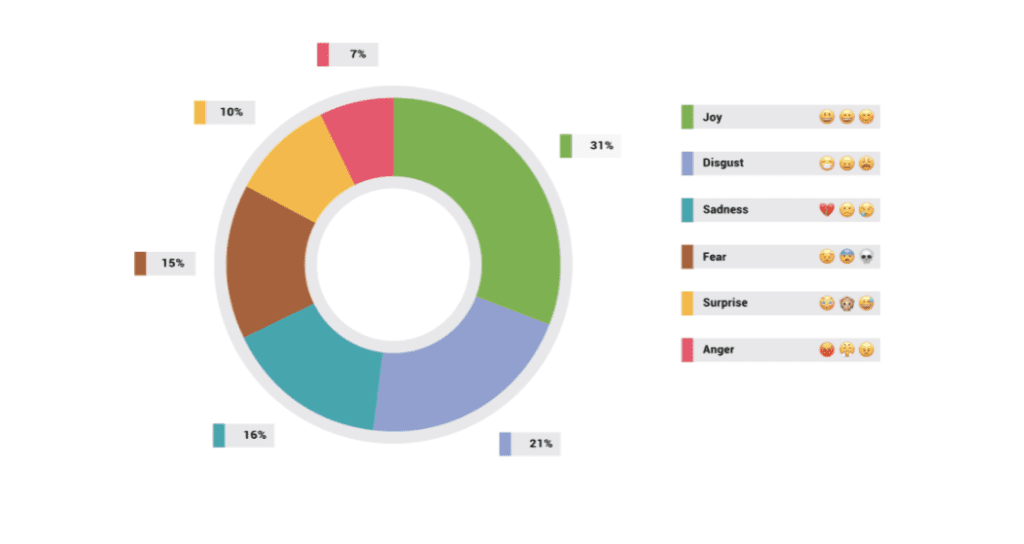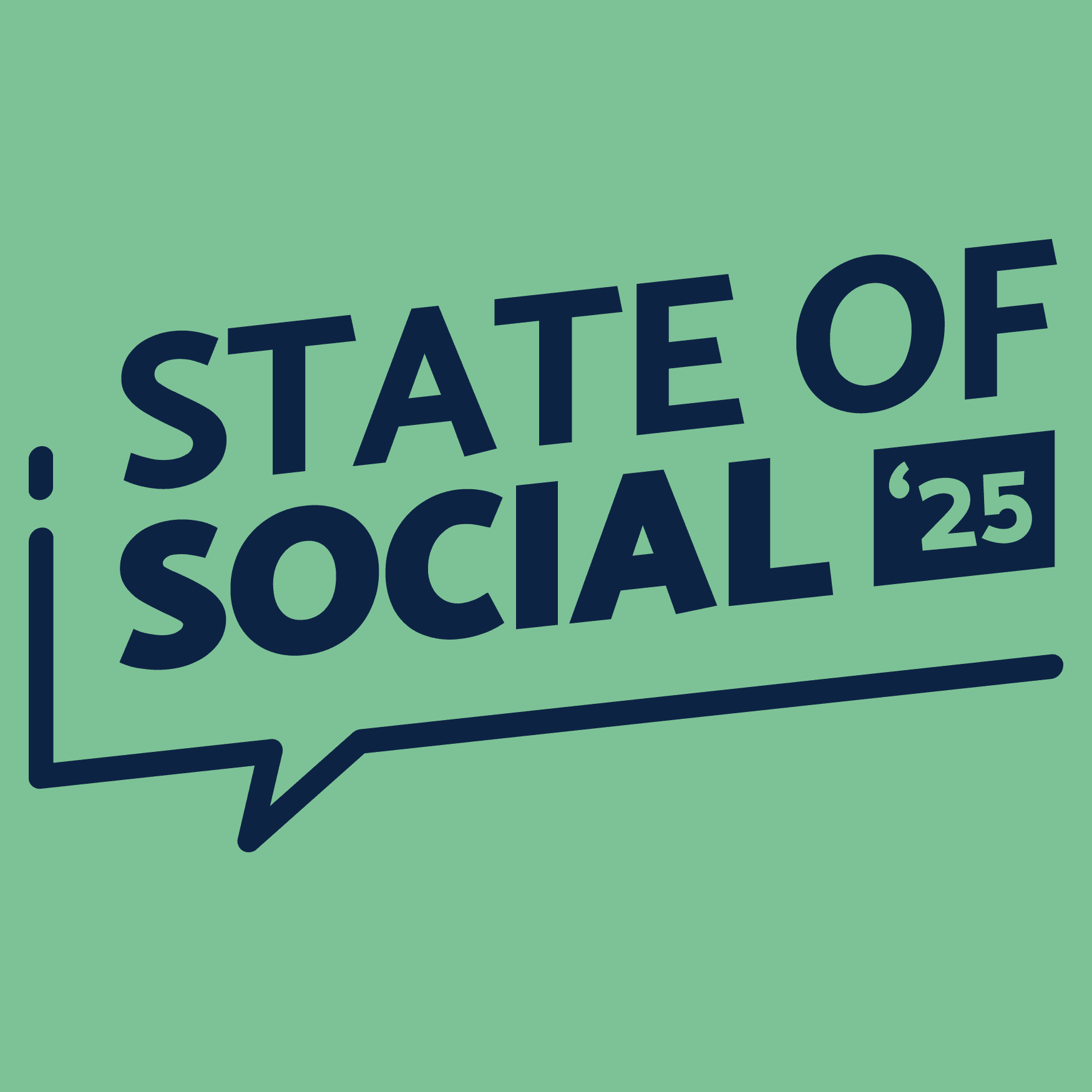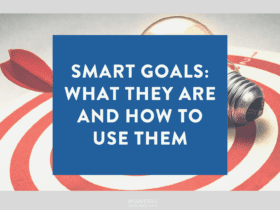😭🥰😂
Knowing the most popular emojis is important for social media and digital marketing professionals who want to break through the digital noise.
Whether you’re trying to humanise your brand, boost engagement, or simply have a little bit of fun with your audience, emojis are a great way to communicate.
Thanks to the internet and the rise of social media, we’re more connected than ever before. People and businesses from all over the world can communicate at the click of a button, which is one reason why emojis have become so popular. Emojis genuinely are on the cusp of becoming one of the world’s first universal languages.

Let’s explore some exciting stats about emojis and look at how brands are using emojis to connect online.
The most popular emojis
According to Emojipedia, the most popular emojis are:
- 😭 Loud crying face
- 😂 Face with tears of joy
- ✨ Sparkles
- ❤️ Red heart
- 🥺 Pleading face
- 🤣 Rolling on the floor laughing emoji
- 🔥 Fire
- 😍 Smiling face with heart-shaped eyes
- 🥰 Smiling face with hearts
- 🙏 Face with folded hands
Check your phone. What are your favourite emojis? Let us know in the comments.
What Are Emojis And Where Do They Come From?
The first emoji was created in 1999 in Japan by artist Shigetaka Kurita. He was on the development team for i-Mode, which was a new internet platform for DOCOMO, one of Japans mobile carriers. Kurita wanted to find a way to write to someone without using text.
He sketched a 12×12 pixel image that could be selected on a keyboard within i-Mode. From there he created the original 176 emojis which are now on display in the Museum of Modern Art in New York.
In 2010 Unicode took over as the developers of the emojis and started to create hundreds more of them. These were the first edition of emojis on the iPhone. These days The Unicode Consortium decides which emojis get produced and released. They are a team that decides on the best emojis to release based on which ones that will be popular, useful and receive the most attention.
How people are using emojis
Here are some interesting stats from the report:
- Over the last two years, the use of negative emojis grew from 23.2% to 25.4% – an increase of 9.5% 😡
- The largest volume of negative emojis was recorded during the month of the American election (8th November 2016). During the week of the election, negative emoji use grew to 28.9% (a two year high) 😢
- Negative emoji use grew by 3% in the months before and during the British EU referendum (23rd June 2016) ☹️
- The highest percentage of positive emojis was recorded back in February 2016 (76.8%). This was partly due to hundreds of thousands of fans wishing @Harry_Styles a happy birthday 🎁

Brands embracing emojis
Still don’t think emojis are taking over how we communicate and consume online? Well, did you know that the volume of tweets containing a brand name and an emoji has grown by 49% since 2015?
Yes, emojis are no longer exclusive to group chats and messaging friends. The gap between consumer and brand is closing every day, and emojis are a big part of how we interact.
According to YouGov America, 57% of Facebook posts get more likes and 33% drive shares and comments if they contain emojis in them. Emojis could also increase engagement rate by 48% on Instagram, and 25% of tweets with emojis see increased engagement.
If you’re a brand looking to humanise how you communicate and interact online, you should seriously consider how emojis can help.
Emoji Resources
Need a little help with your emoji strategy? Here are a few fantastic resources to get you started:
- Emojipedia contains detailed info on every single emoji and how it relates to world events, objects, places and celebrations.
- Emoji Tracker monitors real-time stats on the popularity and usage of emojis on Twitter.
Are emojis suitable for your brand?
While we’d love to give you a straightforward answer, the fact is that whether or not emojis are right for your business really depends on your audience. That said, regardless of your audience, it’s more important to think about which emojis you’re using.
Here are some interesting stats about how men and women use emojis online:
- Women are more likely to use emojis when tweeting and they’re 6.83% more likely to use negative emojis than men
- Men are more likely to use 👀, 😎, 🤔, 😅, and 😏
- Women are more likely to use 🙄, ❤️, 😴, 🙃, and 💜
- Women are 11% more likely to use emojis that represent joy
- Men are 35% more likely to use emojis that represent fear








LET’S CONNECT